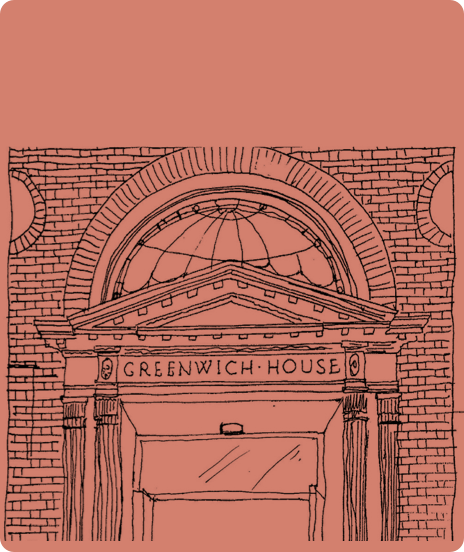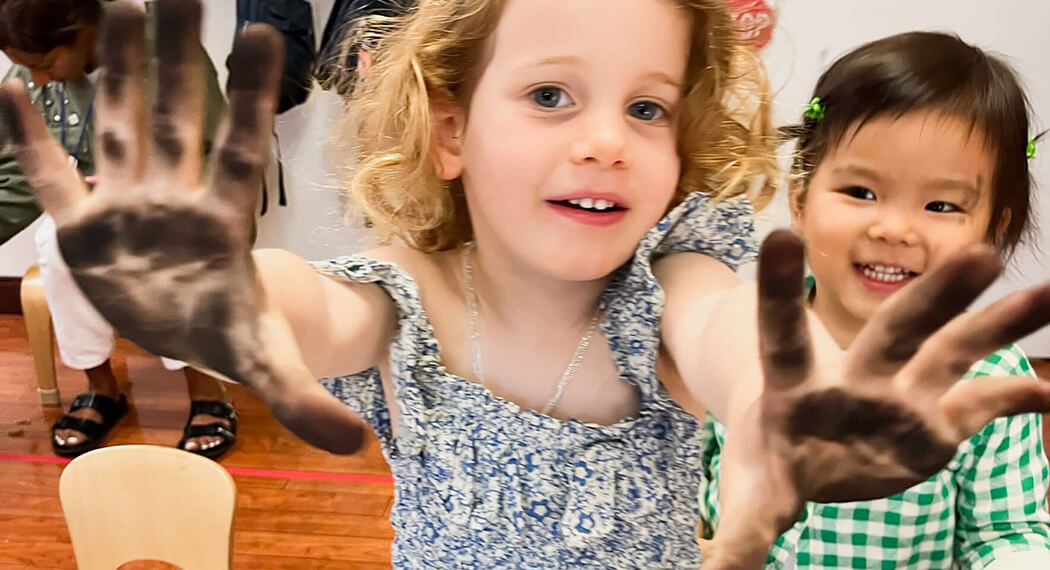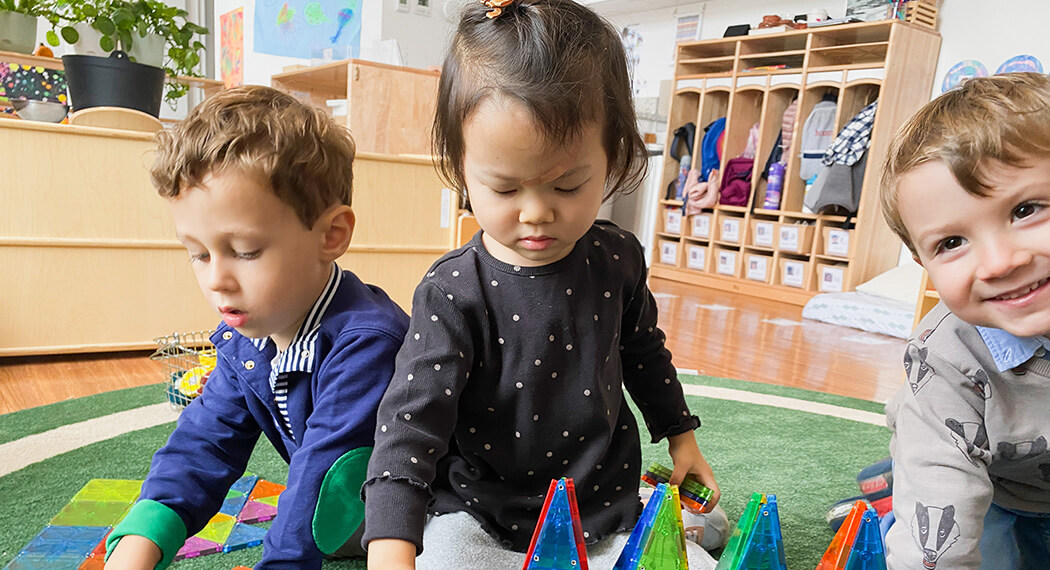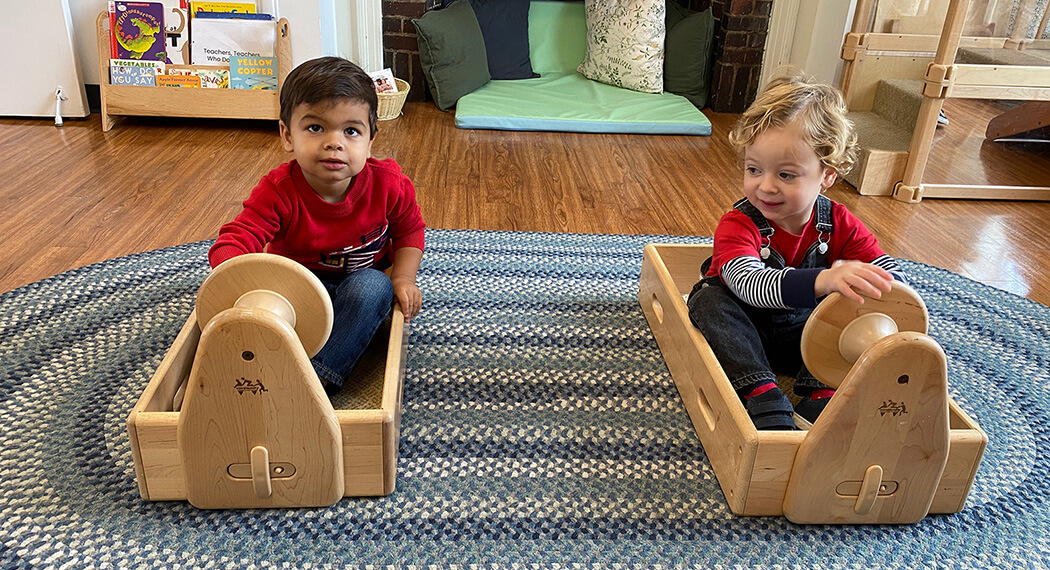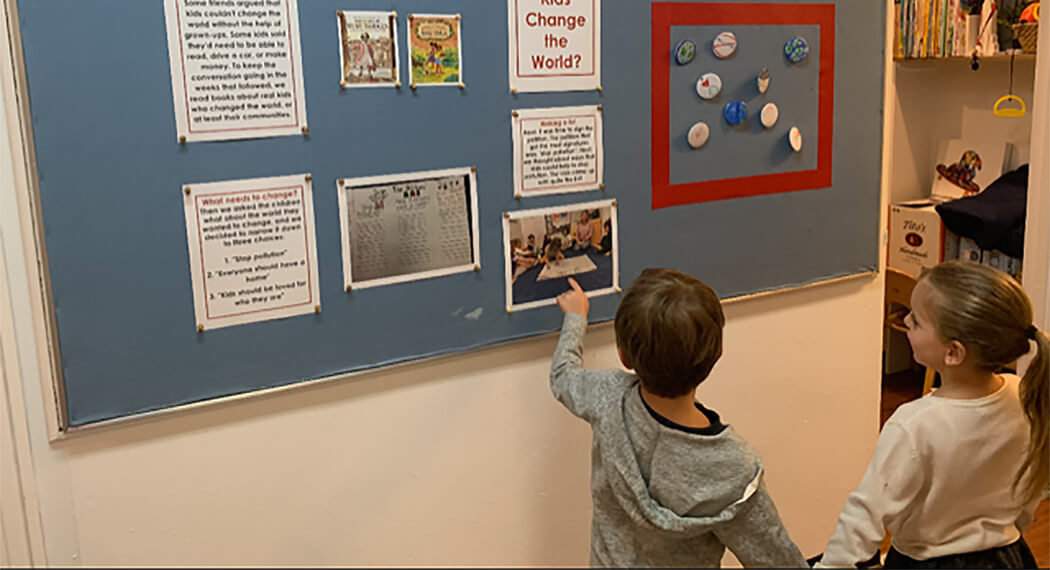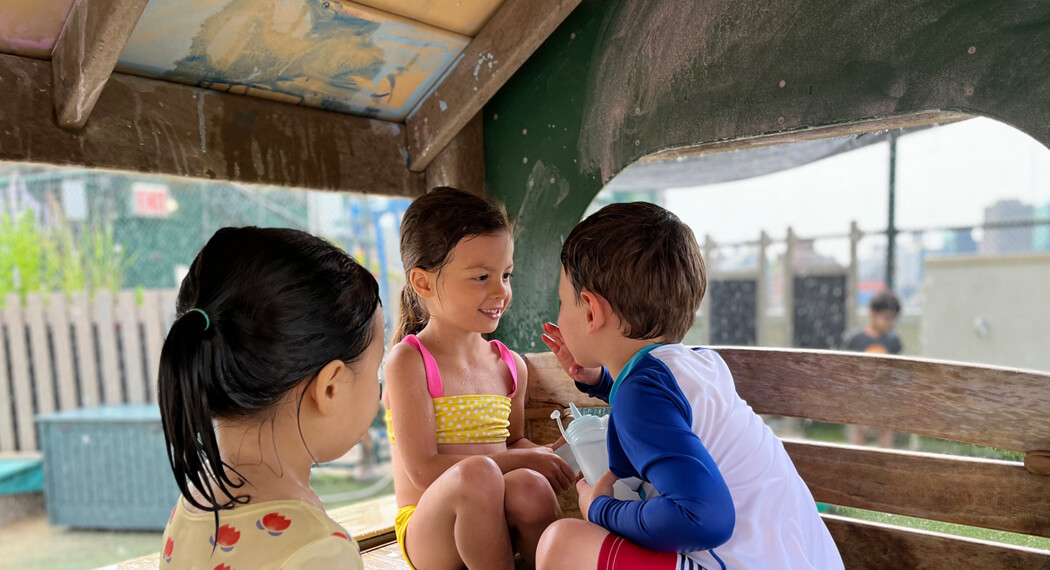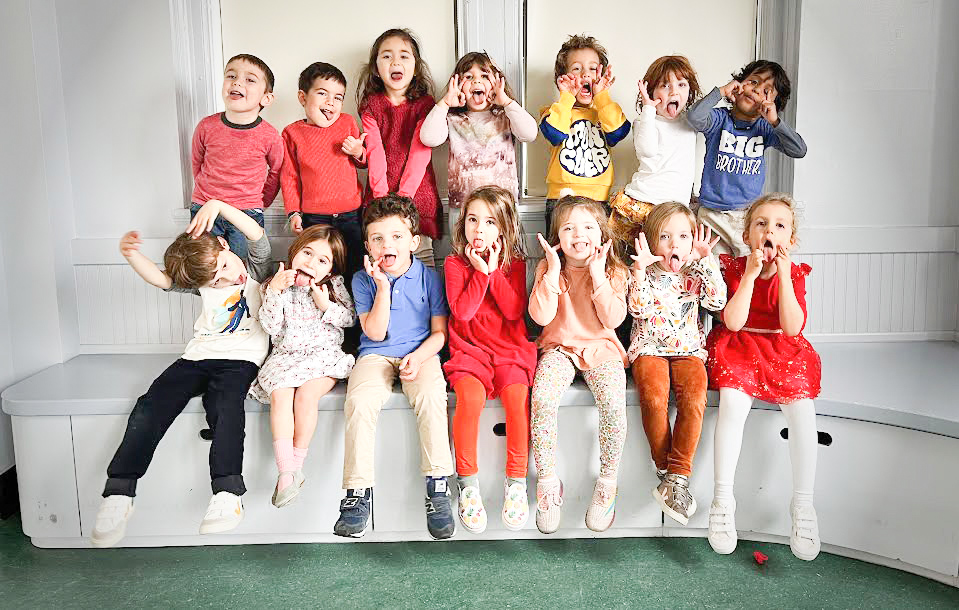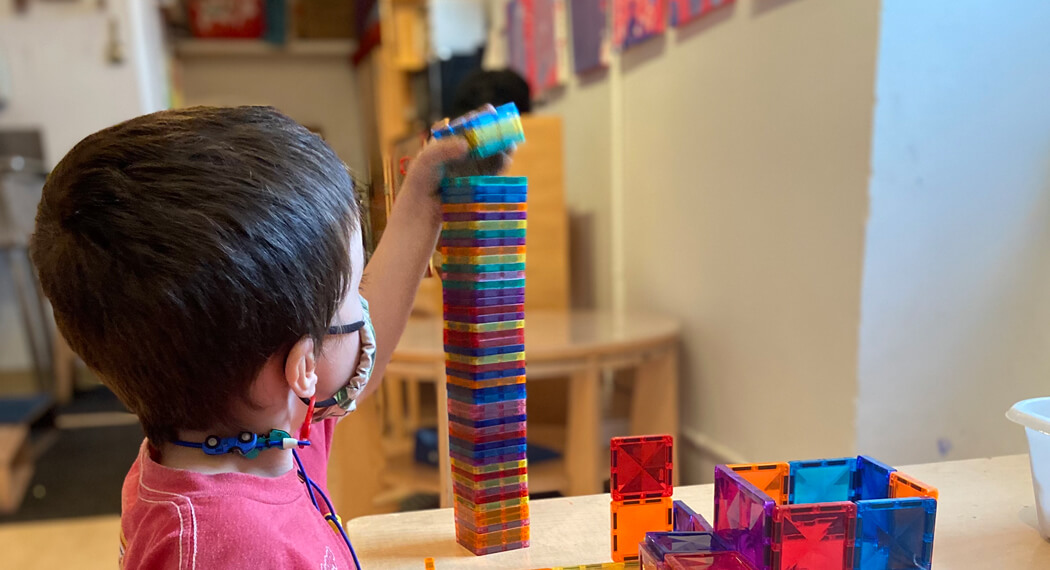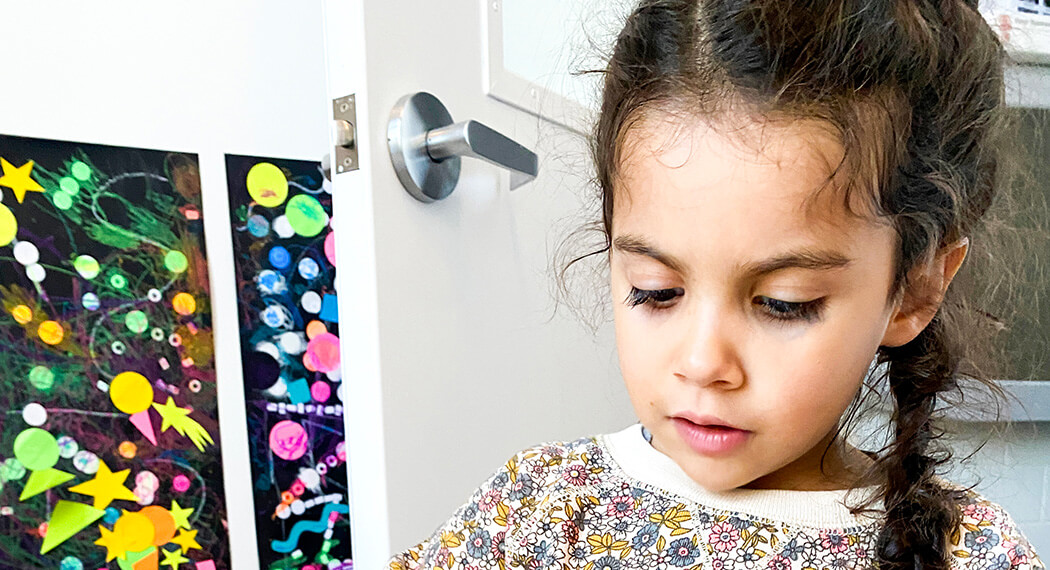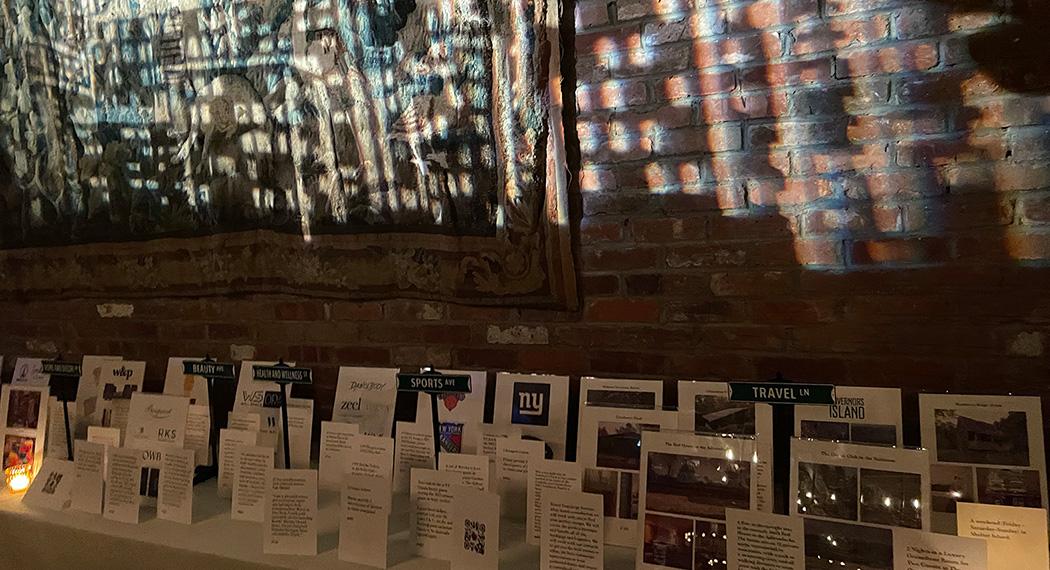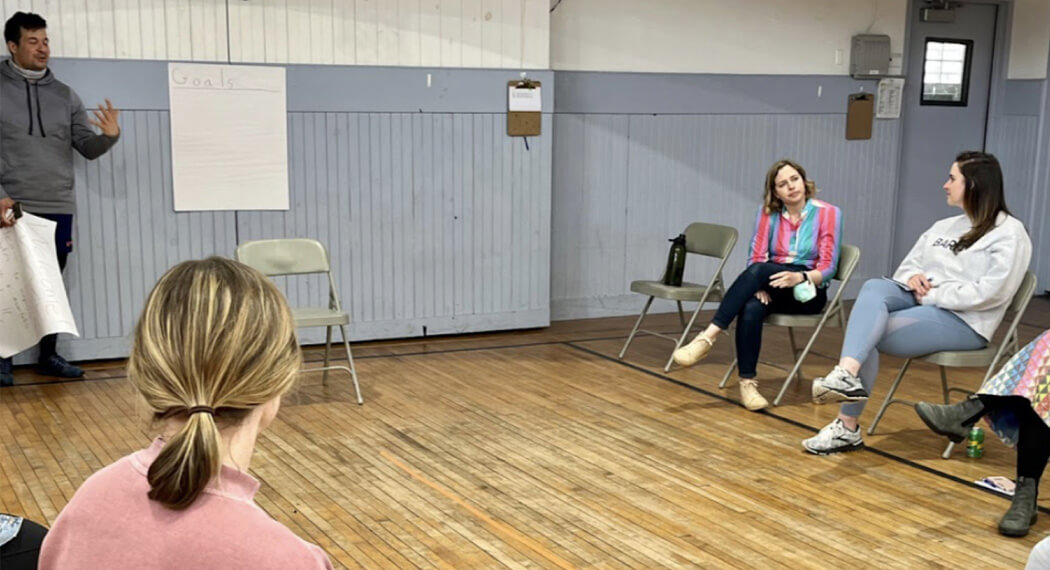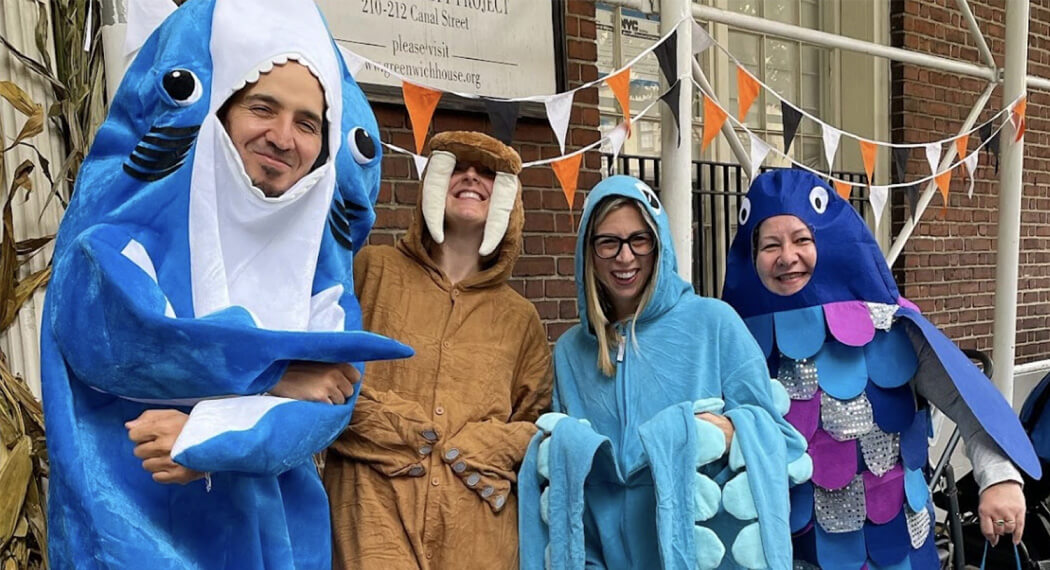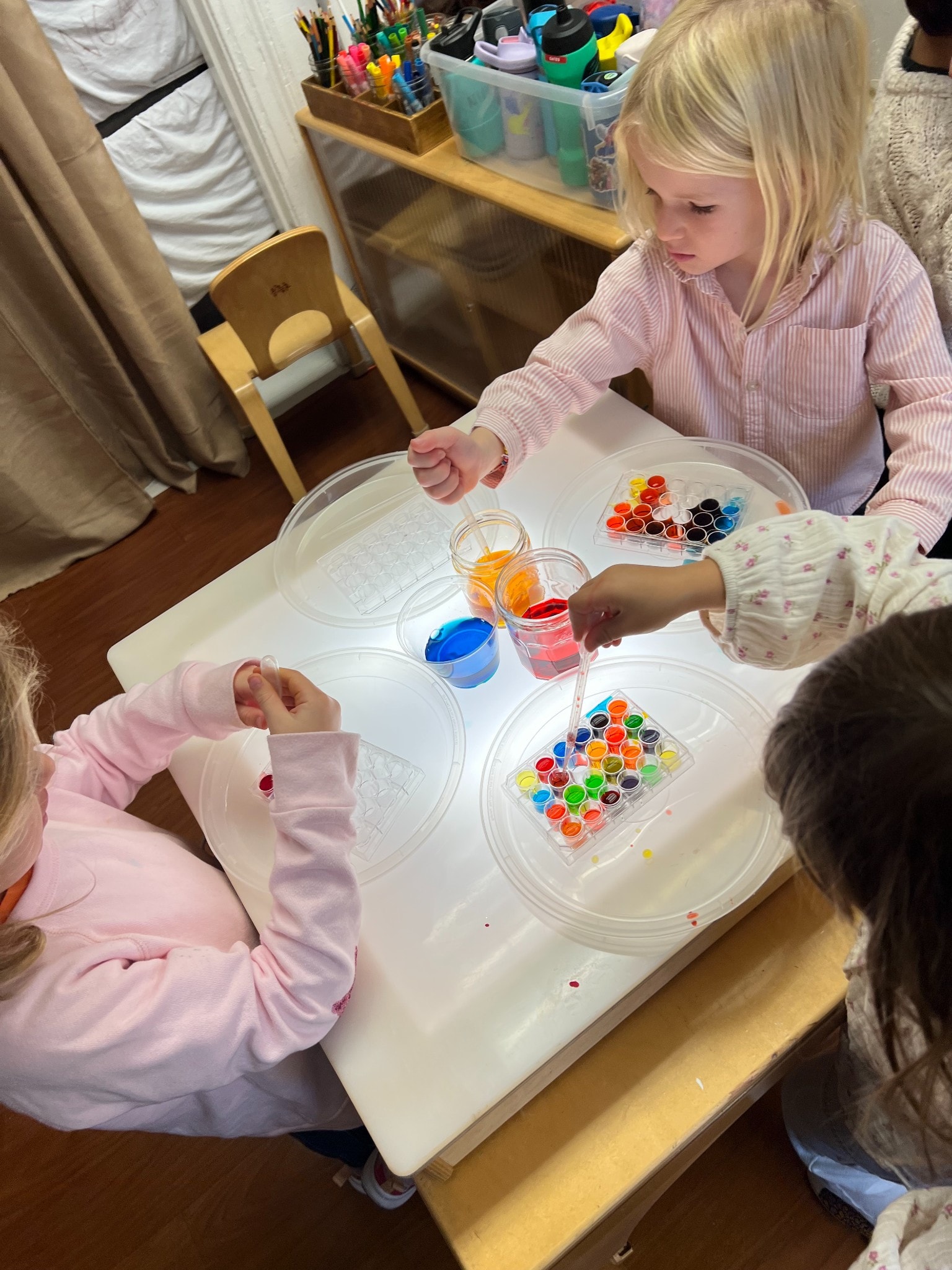Continuing their exploration of rainbows in science today, the Red Room students delved deeper into how color mixes, blends, and changes its hues and tones as it is mixed with water and light. Using two different media, color mixing trays and color tablets, and watercolor paint and paper, the children examined how the different colors seen in a rainbow (red, orange, yellow, green, blue, indigo, violet) can change when a little bit of mixing occurs. We also added the light table to see how light might add another dimensional element to the intensity of the colors and their hues and tones as the children mixed.
As the Red Room children explore how their colors blend, mix, and change depending on whether they use the color trays or the watercolor paper, they are developing their critical thinking skills and learning more about cause and effect. They ask themselves and their peers questions to determine why and how these changes occur. The act of color mixing aids in developing their creativity as well, as they explore new color combinations and begin to understand a larger worldview beyond the primary colors. This opens up greater cognitive pathways as they grow.
The science of color mixing: There are two different things happening when paint color is mixed: one is called subtractive color mixing, and one is called additive color mixing. The light that we see is made up of different wavelengths. The color of the light you are seeing depends on its wavelength. Subtractive color mixing can be considered wavelengths of light, or different colors, being ‘subtracted’ from reaching your eyes. As the children mix paints, more and more wavelengths of light are absorbed and not reflected back to their eyes, so the paint looks darker. However, with water in the mix, there is more light absorption. Additive color mixing can be considered wavelengths of light being ‘added’ to reach your eyes. When wavelengths of light are added together, we see brighter colors.

